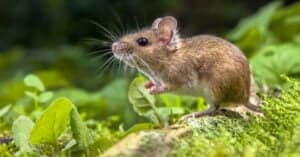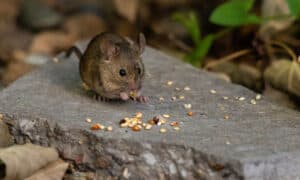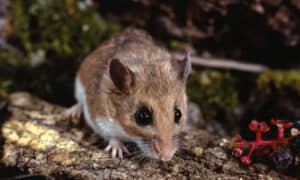Guinea pigs are small mammals that originated in the Andes mountains in South America. Despite their name, they are not native to Guinea, and they are not related to pigs, nor do they resemble them. Instead, guinea pigs are small, stocky animals with short limbs and relatively large heads. Given their appearance, one of the questions often asked about them is, “ are guinea pigs rodents.”
In this article, we’ll find out whether guinea pigs share the characteristics that make a rodent. We’ll also learn many fascinating things about them – including where they come from, how they behave in the wild, and what makes them such good pets. So join us as we discover whether guinea pigs really are rodents!
About Guinea Pigs
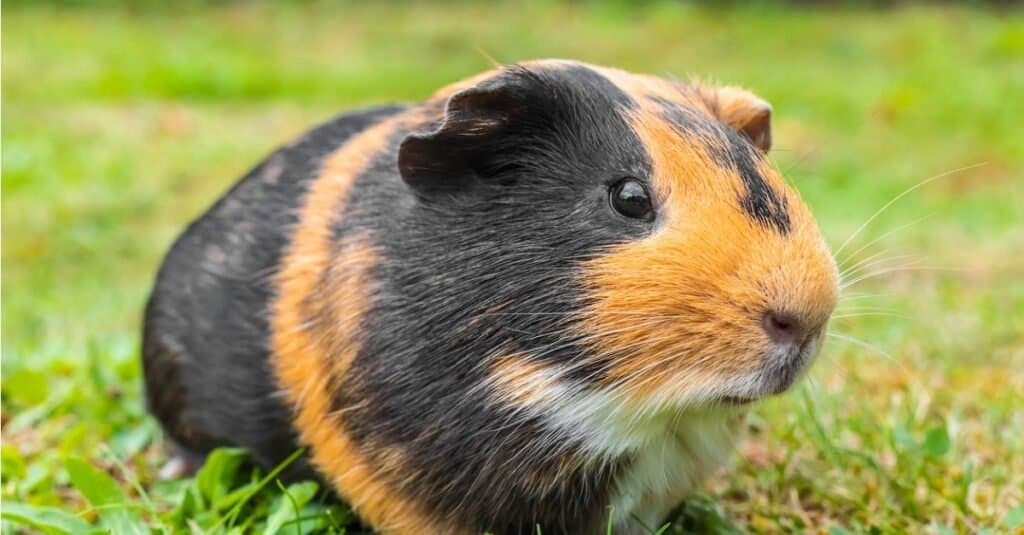
Guinea pigs have a playful and social nature.
©iStock.com/MartinLisner
Guinea pigs, also known as cavies, were domesticated thousands of years ago, and they are now popular as pets around the world. They are typically between 8 and 16 inches long and can be a range of colors – including brown, grey, black, white, and orange in any variation.
Guinea pigs are members of the Caviidae family group, which is commonly known as the cavy family. The cavy family includes only 19 species, including guinea pigs. Members include maras and capybaras (the largest rodents in the world). Wild guinea pigs, maras, and capybaras are typically found across South America. There are six species of guinea pig in total – the domesticated guinea pig (Cavia porcellus) and five species of wild guinea pigs. The wild Montane guinea pig (Cavia tschudii) is generally considered to be the main ancestor of domesticated guinea pigs. Montane guinea pigs are native to the Andes at altitudes of between 6,600 and 12,500 feet, where they live in rocky habitats covered with coarse vegetation.
Guinea pigs in the wild prefer to live in habitats such as savannahs, deserts, grasslands, and rocky hillsides. Although they need plenty of vegetation to hide in, they like predominantly open habitats so that they can detect predators. Guinea pigs are capable of digging their own burrows, but they tend to inhabit burrows that have been abandoned by other small animals.
Domesticated guinea pigs have a very playful and social nature. They are fascinating to watch and play with, and they require minimal maintenance. This, coupled with their general good nature, makes them excellent pets for children and they have quickly become one of the most popular pets around.
Are Guinea Pigs Rodents?
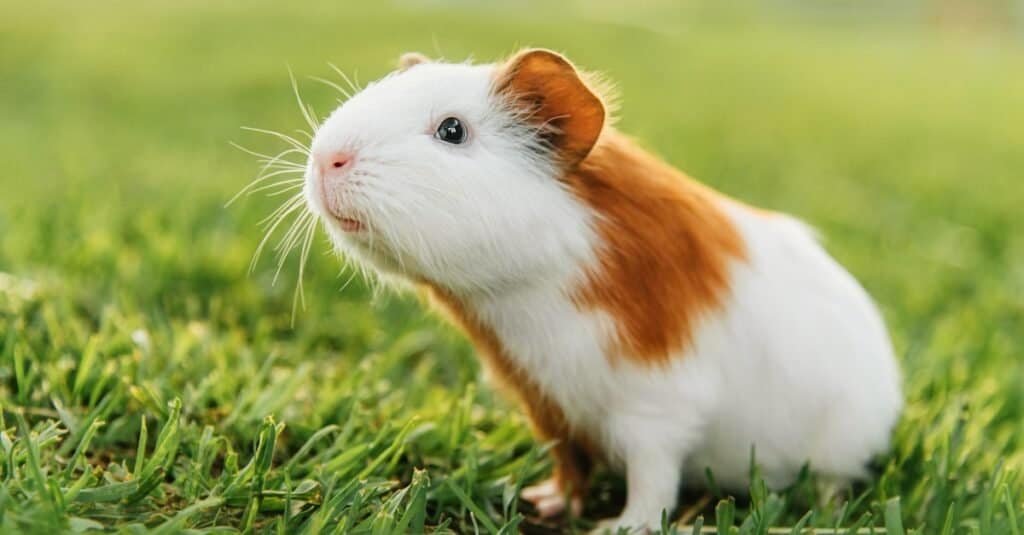
Guinea pigs are rodents and share all the main characteristics.
©Rita_Kochmarjova/Shutterstock.com
Guinea pigs are rodents. They possess all of the main characteristics that define rodents. They are classified in the same order, have the same body shape, and have the same sharp hearing and excellent sense of smell. Guinea pigs are also herbivorous, just like the majority of rodents, and have the same unique set of teeth.
Typical Rodents?
Like all rodents, guinea pigs are members of the Rodentia order, which is the largest order of mammals and contains around 2,000 different species, under which is the Caviidae family. As guinea pigs are rodents, they share a unique set of features that sets rodents apart from other animals. Guinea pigs lack canine teeth. Canine teeth are the sharp, pointy ones that are often called fangs and are typical of most meat-eating animals. Instead of canine teeth, guinea pigs have a large gap between the incisors and the premolars where they should be.
However, the main feature of rodents is their incisor teeth. All rodents have a set of prominent and powerful incisor teeth that never stop growing throughout their lives. However, constantly growing incisors can become a bit of a problem and become too long for their mouths. This is why guinea pigs – like all rodents – must constantly chew and gnaw on things to keep their teeth at a manageable size. Guinea pigs are herbivorous, and their main diet is grass, although they also eat leaves, seeds, bark, and flowers. Hay, food pellets, and fruit and vegetables are all good choices for pet guinea pigs.
Like all rodents, guinea pigs have an excellent sense of smell and sharp hearing. This allows them to be acutely aware of anything that goes on in their surroundings – such as incoming predators – so that they can react accordingly. Guinea pigs also have four toes on their front feet and three toes on their hind feet. All of their toes have incredibly sharp claws well adapted to digging and burrowing.
Guinea Pig Behavior
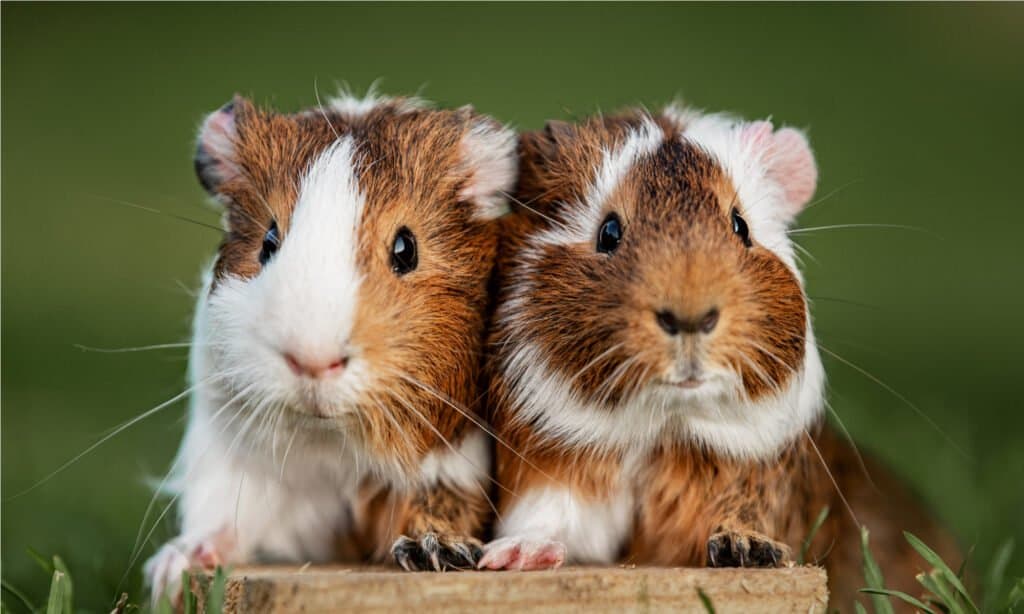
Guinea pigs are incredibly social animals and often live in groups in the wild.
©Rita_Kochmarjova/Shutterstock.com
Most guinea pigs are either diurnal (active during the day and asleep at night) or crepuscular (most active during the twilight hours of dawn and dusk). They are extremely social animals, and in the wild, they are often found living in groups of up to 10 individuals. Guinea pigs are also extremely vocal and communicate through a range of squeaks and chirps. These are used to warn of danger or to show excitement.
Guinea pigs have no set breeding season and can reproduce all year round. Gestation is between 58 and 72 days and litter size ranges between one and six. Unlike many other rodents born blind and hairless, guinea pigs are well-developed at birth. They have hair, teeth, and partial sight and are incredibly mobile for newborns. Young guinea pigs feed on their mother’s milk for around three weeks but begin eating solid food within the first week of birth.
Are Guinea Pigs Under Threat?
Due to their popularity as pets, the population of domesticated guinea pigs is incredibly healthy. However, guinea pigs in the wild have a few natural predators. Predators of guinea pigs include weasels, birds of prey, cats, and dogs. However, humans are one of the biggest predators of guinea pigs. Guinea pigs are both hunted and farmed for food throughout South America. Despite this, most guinea pigs are not under threat. The exception is the South Catarina’s guinea pig which is endemic to a small coastal island near Brazil. Unfortunately, South Catarina’s guinea pigs are critically endangered, and there are approximately only 42 of them left in the wild.
The photo featured at the top of this post is © Rita_Kochmarjova/Shutterstock.com
Thank you for reading! Have some feedback for us? Contact the AZ Animals editorial team.



